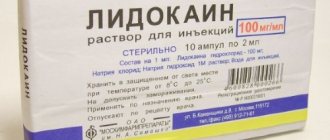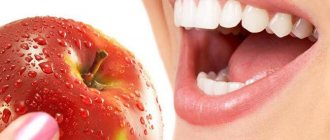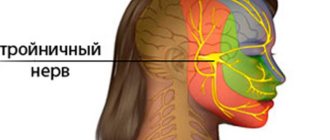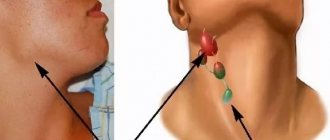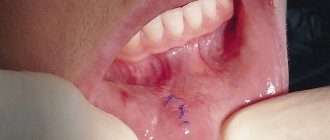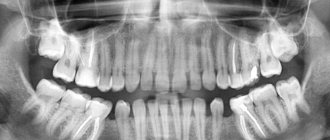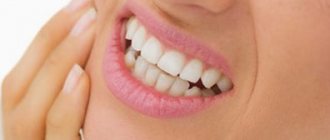When deletion is indicated
Modern dentistry strives to preserve teeth and their roots whenever possible, but this is not always possible. Dental surgeons remove teeth with cysts for the following indications:
- the infectious process was caused by an advanced form of periodontal disease;
- there is a vertically located crack on the root of the tooth or on itself;
- the dental root canals are impassable, as a result of which therapeutic treatment becomes impossible;
- severe tooth decay, and restoring it does not make sense (too expensive and time-consuming);
- the tooth is located entirely in the cavity of the neoplasm;
- the cyst has grown into the nasal cavity, or the size of the tumor is more than 10 mm;
- the root of the tooth has fused with the neoplasm;
- the tooth is very loose.
The dentist decides to remove a tooth with a cyst after a thorough examination of the patient, which includes examination, history taking, radiography or visiography.
How much does it cost to remove a dental cyst with a laser?
The service will cost more than surgical or therapeutic treatment due to the increased comfort, efficiency and painlessness of this technique. The final price for removing a cyst with a laser, which is about 10,000 rubles, usually includes root canal treatment, laser treatment of the cystic cavity, local anesthesia and temporary filling. Final tooth restoration with composite materials is paid additionally.
Treatment of tooth root cysts with a laser is a procedure that allows you to minimize stress and effectively eliminate the disease, provided you contact the clinic in a timely manner. Advanced stages of the disease inevitably lead to tooth loss, leaving no chance for using even the most modern and effective methods.
Removing a tooth with a cyst: does it hurt or not?
In the “Optimal Choice” dental clinics, when removing teeth with benign formations at the roots, the latest anesthetics and modern equipment are used. Therefore, patients do not need to be afraid of anything at all. The doctor selects anesthetics on an individual basis; in some cases, general anesthesia may be recommended (we do not use it). Minor pain may occur after tooth extraction, when the anesthesia wears off. To relieve pain, your doctor may prescribe painkillers.
Advantages and disadvantages of the method
Low-traumatic removal of dental cysts with a laser in Moscow dentistry has a number of undeniable advantages.
- No stitches required
- Painless, since the laser beam does not affect the nerve endings.
- Complete disinfection of the purulent cavity, protecting against the recurrence of neoplasms.
The disadvantages of laser cyst removal include the high cost of the procedure and the fact that laser equipment is available only in premium and business-level clinics.
Types of deletion
A dental cyst can be treated using one of the following surgical methods:
- Cystectomy is the most common way to remove cysts on teeth. During this operation, an incision is made on the gum, through which both the benign neoplasm and the apex of the tooth root with pathology are removed. The cystectomy procedure is usually performed under local anesthesia, after which the doctor prescribes antibiotics to the patient.
- Hemisection - this type of removal is used if a tooth with a cyst has more than one root, and at least one of them is pathologically changed. During this procedure, the cystic formation, the root of the tooth with pathology, and part of the tooth itself are removed. After this operation, a crown is placed on the tooth.
- Cystotomy is the most gentle type of surgical treatment for dental cysts, in which the doctor removes only the front wall of the tumor. The tooth body is completely preserved.
These techniques are an alternative to the complete removal of teeth with cysts. But it is not always possible to apply them. To completely remove teeth with benign tumors, the extraction method is used. The operation can be performed urgently or planned.
Features of dental cyst removal with laser
Removing a dental cyst with a laser takes much less time than a traditional therapeutic approach and does not require an incision in the gum. In this case, the liquid inside the formation is evaporated under the influence of electromagnetic waves, and is not removed mechanically with special tools. The laser beam also disinfects surrounding tissues and destroys pathogenic microorganisms, which eliminates relapse of the disease.
What are the stages of the operation?
The procedure consists of the following steps:
- The desired area is numbed using conduction or infiltration anesthesia.
- The gum is peeled off from the wall using a rasp.
- The tooth is loosened and removed using forceps or an elevator.
- The dental unit is removed from the socket. In difficult cases, the tooth is first sawed into pieces using a drill, and then each of them is removed separately.
- The extracted tooth and socket are examined by a doctor.
- The cyst cavity is cleaned, and the wound is treated with antiseptic drugs.
- The wound is stitched up.
- Using an X-ray examination, the doctor makes sure that fragments, particles of the tooth and the removed tumor do not remain in the jaw.
- Antibiotics, anti-inflammatory drugs and anesthetics are prescribed.
Two to three days after the operation, you need to re-visit your dentist to monitor the condition of the tooth socket.
Treatment options
There are several ways to get rid of a tumor . After an examination and x-ray, the dentist will usually offer the following options:
- therapeutic treatment , long and quite expensive;
- surgical removal of only the cyst itself;
- removal of a tooth along with a cyst.
The third method is the most radical is rarely used in modern dentistry .
Possible complications
Among the common consequences of removing a tooth with a cyst may be the following complications:
- slight increase in body temperature;
- migraine;
- soft tissue swelling;
- toothache.
In order to alleviate the patient's condition, symptomatic treatment is prescribed.
If the doctor is insufficiently qualified or the patient does not comply with medical recommendations, the following complications may arise as a result of surgical intervention:
- infectious process in tissues;
- injury to nerve endings;
- profuse bleeding.
To avoid this, you must contact only trusted dentists with good experience and clinics with modern equipment, and also follow all recommendations given by your doctor.
Signs of a cyst
A cyst is a capsule with fibrous walls filled with pus. It appears against the background of an inflammatory process. The tumor is a protective mechanism of the body: this limits the spread of germs and bacteria.
On an x-ray, the tumor appears as a darkened area near the root. Its predecessor is granuloma. It is accompanied by inflammation of periodontal tissues.
The development of infection is facilitated by:
- deep carious lesions;
- pulpitis;
- periodontitis;
- insufficient antiseptic treatment of the canals during treatment;
- fractures;
- on the upper jaw - diseases of the nasopharynx: sinusitis, sinusitis.
The pathology is often asymptomatic.
Provoking factors are considered to be colds, stress, fatigue, and weakened immunity.
Important! The pathology is asymptomatic for a long time. Only when the bone tissue is significantly destroyed does periodic aching pain, inflammation of the gums, fever, and headaches appear.
Preventive measures
To ensure tissue healing proceeds faster and serious complications do not arise, a number of recommendations must be followed. Dentists at the Optimal Choice clinic give the following advice to their patients:
- For several days after surgery, rest is required; any physical activity (even light) is contraindicated;
- avoid hot water procedures, including baths, steam baths, saunas, and do not use hot compresses;
- You cannot use active mouth rinses for 2-3 days; if necessary, they can be replaced with oral baths with infusions or decoctions of medicinal herbs (with oak bark, calendula, eucalyptus, sage), furatsilin, chlorhexidine, etc.;
- do not drink alcoholic beverages or smoke for 2-3 days;
- Taking medications prescribed by a doctor is mandatory.
Compliance with these rules, as well as regular visits to the dentist for preventive examinations and at the slightest unpleasant symptoms, will allow you to avoid serious negative consequences and significant financial expenses for dental services.
Popular folk recipes
Properly organized home treatment for a dental cyst can alleviate the symptoms of the disease - relieve pain, prevent the spread of infection and speed up recovery.
In folk medicine there is a wide selection of easy-to-make products that are excellent in treating cysts.
Herbal infusions
Medicinal plants that have immunomodulatory and anti-inflammatory effects are used to prepare herbal infusions. These herbs include:
- chamomile and creeping thyme;
- eucalyptus and calendula;
- horsetail and sage;
- medicinal hyssop and yarrow.
Treatment of a disease with decoctions of medicinal herbs will be effective only if they are prepared and applied correctly.
Regardless of the choice of phytocomponent, the herbal decoction is prepared according to a universal recipe:
- Take 250 milliliters (a glass) of boiling water and 2 tablespoons, or 15 - 20 grams, of dry raw materials.
- The required portion is placed in a thermos or glass container with a lid.
- Then the raw materials are poured with boiling water and the broth is infused for at least eight hours.
- It is advisable to wrap the container with the preparation tightly in a blanket or bath towel - this technique will allow you to create the temperature required for preparing the decoction.
It is necessary to rinse the tooth with a herbal decoction at least twice a day, but to speed up recovery it is recommended to resort to this method of treatment about ten to twelve times a day.
During one procedure, it is necessary to hold a portion of the decoction in the mouth for at least 3 minutes.
Important! Before use, the liquid should be heated to thirty-seven degrees. But rinsing the mouth with too hot a decoction can only aggravate the disease!
Alcohol infusions
Homemade medicines that contain alcohol (vodka) are widely used to treat many dental ailments, including dental cysts.
Such products have an anti-inflammatory and warming effect. In addition to the base component, the same medicinal plants that are included in rinsing decoctions are used to prepare infusions.
Horseradish root
Such remedies as alcohol tincture of horseradish root and ficus infusion . Preparation of an alcoholic infusion of horseradish root consists of the following steps:
- Horseradish root is finely grated, and then the resulting mass is placed in a three-liter jar.
- The container with the raw materials is filled with alcohol, then closed with a lid and placed in a cool place for at least 72 hours. Extending the shelf life of the medicine is acceptable.
Ficus
Ficus infusion effectively treats cysts. The preparation of the medicine is simple:
- Prepare 30 large leaves of the plant and extract juice from them.
- Add 50 grams of vodka to the resulting liquid (about 10 grams of juice). The workpiece is stored for two days in a closed container in a cool place.
Garlic in alcohol
An alcoholic tincture of garlic will help cope with the symptoms of a dental cyst. To prepare it, take 100 grams of chopped garlic and pour half a liter of vodka or alcohol over the raw material.
The dishes with the preparation are stored for 2 weeks in a cool, dark place. The tincture should be shaken every few days. Before use, the medicine must be filtered through gauze.
The tincture is diluted in equal proportions with warm boiled water and used as a gum rinse.
To rinse the tooth, take 1 part of alcohol tincture and dilute it in three parts of water. The liquid is heated to thirty-eight degrees. It is recommended to rinse the mouth for at least three minutes during one procedure. It is advisable to repeat the procedure at least three times a day.
Everything about the disease mucositis of the oral mucosa and its treatment with drugs and traditional medicine. Read here about the use of sodium tetraborate for the treatment of stomatitis in adults and children.
Follow the link https://dr-zubov.ru/krasota-i-uxod/otbelivanie/domashnee/sodoj-otzyvy.html to read reviews about teeth whitening with baking soda.
Rinse
A solution for rinsing a tooth affected by a cyst can be prepared not only from medicinal herbs, but also from baking soda. To do this, take a glass of heated boiled water and thoroughly stir one teaspoon of soda in it.
To enhance the effectiveness of the product, in addition to soda, you can add 2 drops of iodine. A saline solution is prepared in a similar way.
Rinsing with lemon juice helps speed up the process. To make the medicine, take 1 tablespoon of fresh lemon juice and a glass of boiled water. Rinse the diseased tooth with the resulting solution 2 times a day.
If you have a tooth cyst, it is recommended to rinse the inflamed gum with tincture of myrrh diluted in warm boiled water.
So, to prepare the solution, take half a glass of water and add 20 drops of tincture. Rinse the tooth with the resulting product for at least half a minute. Number of procedures – 2 times a day.
After rinsing, it is not recommended to eat or drink for at least half an hour.
Salt infusions
Infusions and compresses with added salt are also successfully used in the treatment of dental cysts.
Herbal infusion mixture
To make a herbal-salt infusion, you should prepare a concentrated decoction of the selected medicinal plant. For 1 glass of water take 2 tablespoons of dry herbs.
Dissolve one teaspoon of salt in the broth. Use the prepared emulsion for rinsing teeth.
With added honey
A remedy made from honey and sea salt has proven itself well. To prepare the medicine, take a teaspoon of honey and 4 tablespoons of salt.
All components must be mixed until a paste is formed, which should then be gently rubbed into the inflamed gum. It is preferable to perform the procedure before going to bed.
With turmeric
Rubbing the affected gum with a mass containing salt and turmeric powder, taken in equal proportions, helps relieve inflammation and pain from cysts.
A paste of salt and turmeric should be gently rubbed into the gums.
See the rating of the best whitening toothpastes and consumer opinions. In this article, read reviews about the service life of dental implants.
At this address https://dr-zubov.ru/xirurgiya/udalenie-zubov/kak-i-chem-poloskat-rot.html find out how to rinse your mouth after tooth extraction, about folk remedies that promote rapid healing.
Garlic rub
Garlic is an effective natural remedy used to treat inflammatory processes, including those caused by dental cysts.
Rubbing with garlic will help cope with the disease. To carry out the procedure, take a clove of garlic, peel it and cut it in half. Use the cut side (juicy side) to gently rub the gum surrounding the affected tooth.
Also, if you have a cyst, you can rub the gum with a paste made from carefully crushed garlic and rock salt (the components are taken in equal proportions). The product is gently rubbed into the gums . If a strong burning sensation occurs, the procedure should be abandoned.
You can rub the gums with a tooth cyst with a mass prepared from ground garlic and butter.
Oils
On an outpatient basis, cysts can be treated with oils. For example, sesame oil has a powerful bactericidal effect . To carry out the procedure, just take a teaspoon of the product and hold it in your mouth for about five minutes.
To treat cysts, you can use essential oils, for example, tea tree oil, bergamot, eucalyptus, mint and others.
It is enough to take a small piece of cotton wool and soak it with a few drops of the selected essential oil. The finished compress should be applied to the inflamed gum for a couple of minutes.
Unusual recipe
In folk medicine there is a very unusual recipe used in home treatment for dental cysts. It is a combination of old nail rust and honey.
To make homemade medicine, take a rusty nail and heat it until it turns red. After this, the nail must be lowered into a container with honey.
As soon as the rust transfers from the nail to the honey, it should be carefully collected and applied to the affected gum overnight . To heal the cyst as quickly as possible, it is advisable to perform the procedure over several days.
Experts' opinion
Question: Is it possible to avoid the occurrence of a cyst on a tooth?
Answer : The etiology of the formation of a cyst at the root of a tooth can be different. At the initial stages, treatment of this pathology does not pose a serious problem. Therefore, it is very important to be regularly examined by a dentist, and also to take x-rays or visiography at least once a year to identify any pathologies of the dental system. New growths, if present, will also be visible on the images. To reduce the likelihood of tumors appearing, if any diseases of the oral cavity and nasopharynx occur, it is necessary to treat them in a timely manner: develop the habit of regularly rinsing your mouth with antiseptics, and learn to brush your teeth correctly. Maintaining a healthy lifestyle, a balanced diet, a strong immune system and preventive dental examinations are the key to dental health.
Question: Is it possible to get rid of a cyst on a tooth at home on your own?
Answer : We do not recommend self-medication if you have any pain or unpleasant symptoms in the oral cavity. Any discomfort may be a sign of a serious illness that requires medical attention. If it is not possible to urgently visit the dentist, then to reduce pain you can use the following rinses: herbal decoctions (yarrow, calendula, sage, chamomile, oak bark), a solution of baking soda or salt, vodka, tea tree essential oil. This may help reduce pain, but in any case you should see a doctor as soon as possible.
How to recognize a cyst - symptoms
The problem is that in the early stages the tumor does not manifest itself in any way. You were bothered by a tooth with a hole, sometimes it hurt, sometimes it became inflamed, and now the unpleasant sensations have disappeared. You calmed down and forgot about him. But the caries remained, and the infection did not disappear anywhere - it simply transformed into a cyst, which for the time being will not make itself felt.
When the cyst increases in size - and this inevitably happens - the following symptoms may occur:
- pain in the tooth, jaw, temple, back of the head;
- increased body temperature;
- fatigue and weakness;
- enlarged lymph nodes;
- frequent runny nose with the risk of complications - chronic sinusitis.
Eventually, if left untreated, it becomes so large that it is visually noticeable. Both the gums under the tooth, on the roots of which it formed, and the cheek on the outside swell, so-called gumboil is formed. If you have gumboil, it hurts not only to eat, but even to talk and just open your mouth.
Important: a cyst cannot be treated at home; sooner or later you will have to see a doctor anyway. And it is better not to delay the visit, not to engage in self-diagnosis and not to experiment with homemade recipes “from a neighbor” if you do not want to get extensive inflammation with suppuration.
Removal steps
The stages of removal during conservative and surgical treatment differ significantly from each other. The traditional therapeutic method of treatment includes the following steps:
- The doctor administers local anesthesia to the damaged area and removes the filling material from the tooth. After this, all affected tissue is cleaned from the cavity of the element.
- Using dental instruments, a specialist cleans the canal cavity from particles of dead pulp. In some cases, the specialist resorts to expanding the dental canals and resection of part of the affected tissue.
- A thorough antiseptic treatment is performed.
- The cavity is left open for 7-10 days. During this time, the patient needs to rinse his mouth with antiseptic compounds. In parallel with local dental treatment, the patient is prescribed antimicrobial drugs. During treatment, you should avoid consuming solid foods, avoid hypothermia and crowded places.
- When you return to the dentist , a special substance is introduced into the tooth cavity to help relieve inflammation and suppress the vital activity of pathogenic flora. Most often, copper-calcium preparations are used for these purposes.
- At the last stage, the dental canals are sealed with temporary material.
The most used method of surgical intervention, cystectomy, is usually performed in conjunction with resection of the root of the element near which the cyst is located. This type of intervention is recommended for patients if radical methods of therapy are unsuccessful.
The main goal of the operation is to eliminate the entire cavity of the formation to prevent further spread of infection inside the oral cavity. After the intervention, the tooth affected by the purulent capsule remains unharmed.
Before the operation, the patient undergoes preparatory procedures - within a few days, the oral cavity is sanitized and the tooth canals are sealed.
Cystectomy is performed as follows:
- The doctor performs conduction or infiltration anesthesia of the treated area.
- After the action of the anesthetic drug, an incision the soft tissue down to the bone.
- is peeled off using a burr .
- The specialist performs resection of the tooth root, thereby eliminating the chronic source of inflammation. Thanks to the manipulations, the remnants of the tumor are removed and the risk of recurrence of the problem is eliminated.
- If the doctor, during the initial examination, discovers a lack of filling material in the root canal, then treated .
- The wound formed after removal of the cyst is filled with a bone-forming composition. This is done to prevent soft tissue from growing.
- At the last stages of the operation, sutured .
Treatment of dental cysts with folk remedies
Treatment of dental cysts using traditional medicine methods can be supplemented by the use of some folk remedies. But it should be noted that the main therapeutic effect should be prescribed by a dentist.
Let's look at some accompanying folk recipes:
- saline solution - a tablespoon of salt (preferably iodized) is diluted with warm boiled water until completely dissolved. Used to rinse a diseased tooth several times a day;
- alcohol solutions - vodka, alcohol tinctures with herbs (calendula, aloe, St. John's wort, chamomile). Do not use solutions containing more than 40% alcohol to avoid damage to the oral mucosa;
- herbal decoctions - brew 2 tablespoons of dried herbs (sage, chamomile, eucalyptus, yarrow) per glass of boiling water. Rinse your mouth with freshly brewed decoction throughout the day. The decoction cannot be used hot; it must be cooled to body temperature;
- garlic - a piece of garlic clove, or a porridge from it, is applied to the diseased area of the gum. Do not hold for too long to avoid burns.
Folk remedies are important in the treatment of dental cysts, but the dentist must choose the main therapeutic method.

